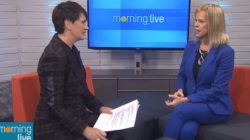Almost from the minute your baby is born, you might start thinking about the financial implications of this wondrous bundle of joy. Not just the costs associated with having a baby, but throughout their life, culminating in what many parents see as the largest expense they will incur with a child; university or college. Canadians are smart about using RESP’s (Registered Educations Savings Plan) but expenses are more than simply tuition. Add in residence, a meal plan, and other life essentials (transportation, technology, entertainment), and the costs can soar. Believe me, I know; my third child is heading off to university in the fall.
What can you do to mitigate and manage the cost to you, and your student?
1– Teach your child about money. Let’s face it, by the time they go away for a post secondary education, they’re not even really children anymore. They should have a working knowledge of how a bank account works, credit card interest rates, credit scoring and a general understanding of how much things cost.
2– Check into scholarship awards, bursaries and grants. Many go unclaimed from universities and associations because the awareness of smaller awards isn’t high.
3– Create a budget for one-time purchases, as well as ongoing expenses, for them to follow during the school year. Decide what they really need, versus want, when they move out.
4– Students should consider getting a part time job on campus during the school year, depending on their study load. Take the job, then figure out if it is manageable; don’t presume it’s not doable.
5– Look at buying second-hand versus new. In Canada, the second-hand economy has grown to $29 billion, based on the Kijiji Second-Hand Economy Index, with 82% of Canadians having participated in a second-hand transaction in 2016, and saving an average $843 per year.
> Technology: Tech is one of the most-exchanged items in the second-hand economy and buying gently used can help offset the costs. Alternatively, by selling an item you no longer need can put extra cash in your pocket that can then be used to upgrade your laptop, printer, or tablet. Beyond school necessities, your son might want his own gaming unit for residence or your daughter might want her own portable speaker – best check out the second-hand market first to see what savings can be found.
> Textbooks: Textbooks are extremely expensive and only useful for one or two courses at a time. Textbooks are always in demand on Kijiji but searches increase between the months of June and September, making this a great time to buy or sell. Popular subject areas based on popular searches include business, marketing and communications, and medical studies.
> Furniture and household accessories: A student desk, lamp, shelving units are always easy to find in this market, with a high amount of inventory available. If they’re taken care of they can be resold at the end of their education as well, or passed on to the next sibling heading out the door.
> Automobiles: Some students (and their parents) feel they might need their own transportation to get to and from campus, easily. Second-hand car sales are not new; and it’s not surprising that autos are among the top category in the second-hand economy with the highest perceived savings. On Kijiji alone, a new ad for a vehicle is posted every two seconds, so you’ll have no trouble finding a car that fits your needs!
Above all, have your child involved in the budgeting and cost process as they work their way through their degree. Acquiring financial literacy is one of life’s lessons they’ll never forget.
*This post was sponsored by Kijiji. As always, opinions are my own.







